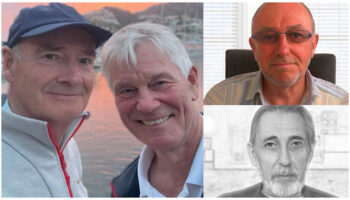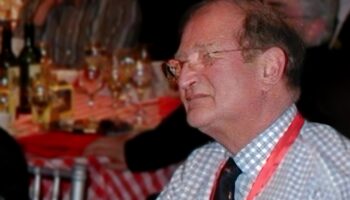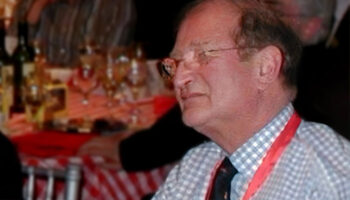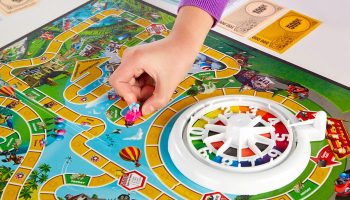Hasbro’s former Inventor Relations guru Mike Meyers on asking questions – and giving credit
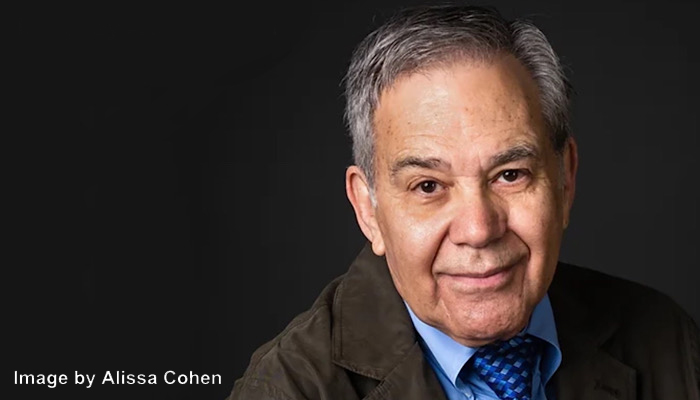
Mike, I understand you’ve been almost completely retired for 30 years… First, then, thank you SO much for doing this. I guess we should start at the beginning… What’s your background?
Academically, my background is in Industrial Designing. When I came out of the army, I started a small company that designed mechanical action, in-store displays. That led to my first experience of “life happens”…
Oh?
Because of some decisions made by another individual, I became involved in a legal brouhaha and ended up walking away from this start-up. I also learned that I could be held accountable for any and all actions by someone who was legally considered my partner. As a result, I began searching for a job in the newspaper. It turned out to be the one and only time I ever did that. From that point on, it was a matter of “Then the phone rang…”
And where did that newspaper search take you?
It was a company called Pyro Plastics. They were the largest injection moulder of plastics in the U.S. They had their own proprietary line of hobby kits. Also, one of their clients was a company called Mattel – so I backed into the toy business! In the beginning, I was Pyro’s only designer. As time passed, we hired a few others that reported to me.
Did what you learned there come in useful later?
Yes; I absorbed as much knowledge as I could and studied a lot on my own. That was true my whole career as I moved from one position to another… I eventually became knowledgeable in almost all means of processing plastic, production processes, designing all kinds of mechanisms, basic electronics – anything I felt would allow me to do my job better. Then, one day, the phone rang. It was someone I went to school with. His company, Lehn & Fink, was looking for a packaging engineer.
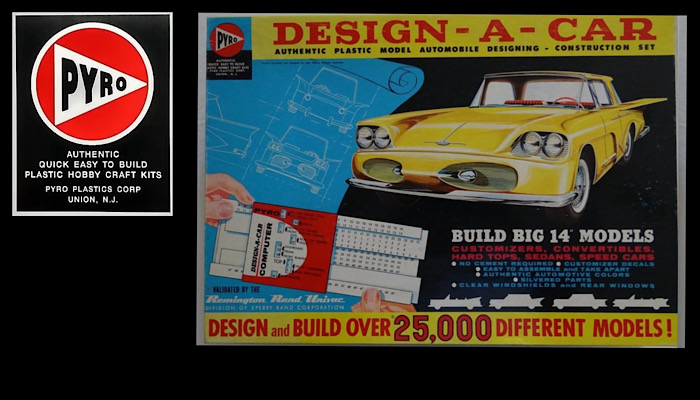
Lehn & Fink was a cosmetics firm…
Right – a very big one. And I’ll be honest, I wasn’t even sure what a packaging engineer was, but it was paying a lot more than I was making! So I did that for a while. I worked on toiletries and cosmetics; disinfectant sprays and other household products for about two years. Then the phone rang! This time it was the former head engineer from Pyro Plastics. He was now with a firm called Child Guidance – and they had an opening for a Design Manager. From that point in time, I would be in the toy and game business for the rest of my career… It also began my first contacts with inventors.
And as I said to you when we were setting this up: people STILL refer to you today – 30 years after you retired! So I’m assuming you did something right?
Well… Child Guidance is where I began to develop my personal methodologies for trying to maximise the inventor experience. I felt that creative people, unlike most others, couldn’t wear masks. What they chose to put on the table is who they are, and they open themselves to criticism by doing that. I also realised very quickly that most concepts would be rejected…
Later – when I was at Milton Bradley – I looked at about 4,000 concepts a year. Ultimately, only a fraction would make the line. But because I wanted to be the first person to come to mind when creatives felt they had something, I set out to provide a very positive environment for them.
What kind of thing did you do; what were your methods?
A few ways! I would put egos in a lock box. I’d try to add to, improve and guide every concept, even if it wasn’t for us. I also tried to be available a lot; either in the office or travelling – both domestically and internationally. I also felt strongly – when initially evaluating a concept – that the first question should not be whether I personally liked it or not…
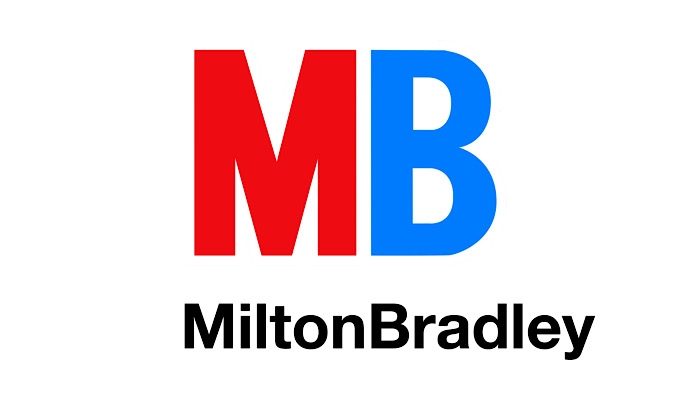
What should the first question be?
The first question should be, “Who is it for?” Then, “What do they watch? What do they read? What’s changing in their world? Either positively or negatively?” Questions like that… But they take a huge time commitment; the list of questions is almost endless. Ultimately, I developed an evaluation tool that I named The Velcro Method. It was all based upon questions… Always knowing that – no matter how hard one tried – there was always one more question. While it wasn’t foolproof, it was part of having a very high success rate.
I’m told you were also very quick to give credit where it’s due Mike, and sometimes where it’s not so due…
I always felt that it’s far better to give credit than to take credit, yes! So with all the products I played a part in developing, I went out of my way to stay in the background. Since almost all items are collaborative, avoiding taking credit became important to me when working with inventors. For instance, I talked to more than a few people who believe they were responsible for Hot Wheels over the years… The truth of the matter is that they were all partially right!
I can imagine! And so we can get our bearings, Mike – without detracting from any inventors – what would be some of the products on which you worked?
Well… I was involved in many products at many companies. I guess I could list a few… But then, you could find any game from the Milton Bradley/Hasbro lines introduced between 1977 until I retired in 1992 and know I was involved. And actually, I remained there as a consultant for another 12 years, but my involvement was more with items that originated from Japanese sources. In any case, some of those products are still part of the line 30 years on!
Out of interest, do you remember the first toy you developed?
The first was TOMY’s Push ’n’ Go. From watching toddlers play, I realised they could benefit from an unbreakable toy that required almost no effort, and delivered a big pay off. I figured out how to build the mechanism, and built a working prototype. But my boss had absolutely no interest in it! So I asked if I could send it to TOMY in Japan as we often worked with them. It’s since sold over 200 million units.
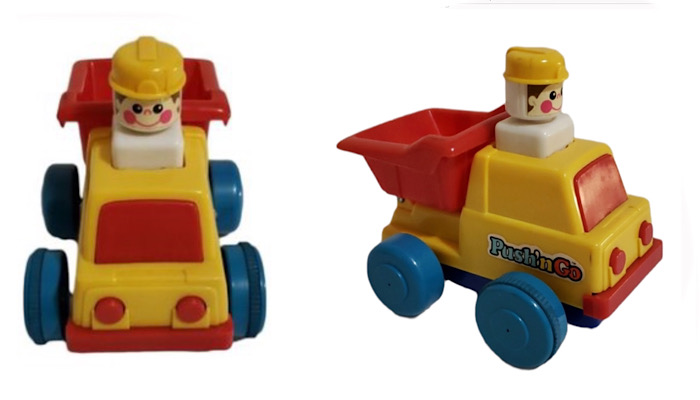
Wow. And that line’s still going strong. Are there any others that come to mind?
I was fond of one I worked on in the early 80s. I’d been inspired by a scene in the first Star Wars movie. I thought about a game where the pieces moved themselves. It was produced as a chess game called Grand Master Chess by Milton Bradley. The actual programming was done by one of the best AI people in the world, David Levy. It was quite expensive because – back then – memory wasn’t cheap. I believe a variation is still being made by a company in Florida.
And did you have a process – or mindset, perhaps – that you thought was useful throughout your career, Mike?
Whenever I joined a new company, I entered with an attitude I developed called ‘Premeditated Ignorance’. See, I wasn’t much interested in trying to apply what I thought I already knew… I was more interested in identifying those people in the company who were the most important movers and shakers…
To what end?
I’d want to know what they thought and knew… Learn where the company was. Where did they want to take it? How did they think they were going to get there? In addition, I’d read any research they had going back as many years as they had it. Over the years, that Premeditated Ignorance helped me see things the way other people did – and see it differently, too. From time to time, it would really pay off. Big Wheel was an example of that…
Big Wheel – for those that don’t know it – was a beautiful sit-and-ride pedal trike… So this would be while you were at Marx Toys?
While I was at Marx Toys, yes; in the early 70s… Big Wheel was their number one item by volume, about a million-plus units per year. That was no surprise to me. What did surprise me, though, was that it barely earned any money. After performing a forensic-type investigation, I determined that Big Wheel could earn more money with some basic changes. Just as importantly, I discovered an opportunity to expand the riding market.
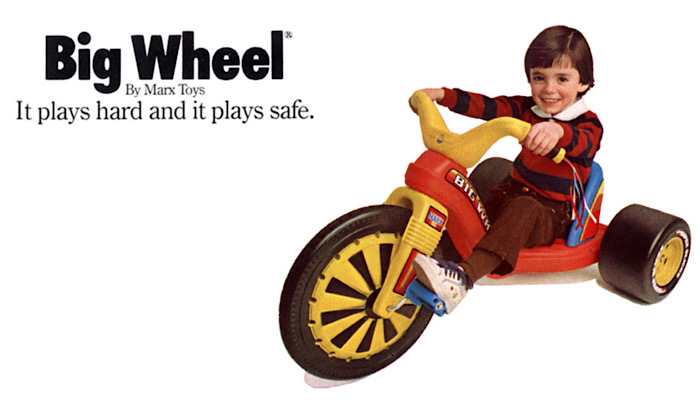
Oh?
As I stated earlier, life happens! I was barely at Marx two weeks when I was contacted by a product agent. He wanted me to see a riding-toy concept that my predecessor had rejected… Ironically, it had come from Hasbro’s closet. A few days later, it was sitting in my office. It wasn’t ‘it’, but with some changes it could be… But it was far more difficult than I anticipated. It became The Green Machine.
Oh, wow! The Green Machine was like a step up from Big Wheel; a sit-and-ride vehicle for older kids. And actually, I’ve always been curious: did that cannibalise some of the Big Wheel market?
No… That following year, Big Wheel stayed at the million-plus sales figure, at a bigger profit, and The Green Machine sold about 750,000 – because it was production limited. The sales rate would’ve passed Big Wheel; it was the hottest item at Toy Fair. Marx had been losing money for years, but made a profit that year… And that had a lot to do with the company being sold to Dunbee-Combex-Marx in 1976.
Personally, I officially retired from Hasbro in November 92, though I did commit to consult for the President of Hasbro Games. That lasted another 12 years… About two years into that, the phone rang again. It was Tom Kremer, founder of Seven Towns. He asked if I would join him and two others – Phil Orbanes and Alex Randolph – in forming a game company.
Phil Orbanes and Alex Randolph were pretty much toy and game royalty at that point, presumably?
Oh, they were great! Phil Orbanes was the former Head of Research and Development at Parker Bros. And Alex was recognised as the of the best game inventors in Europe. But I told Tom that it’d pose a conflict with my Hasbro commitment. He said not to worry; that he’d take care of that. Knowing Tom for many years, you came to know that nothing he said could be taken lightly…

The next day, he called back and said the issue had been dealt with. Obviously, I was more than a little interested in the details… He’d spoken to Alan Hassenfeld and, as a result, Hasbro would invest in this new venture as a minority partner. As I’d be performing similar duties for both companies, it took a while. Eventually, though, something workable was sorted out – and it turned out to be very positive for everyone, of course.
When was that, Mike?
Winning Moves U.S. started in business in 1995, followed by Winning Moves International in 1997. The original business model – which included original product and certain licensed properties from Hasbro – kept evolving. It now includes products from other companies such as Wham-O. I still serve as Chairman of the Board, but I’m not really involved in the day-to-day operations.
Something else I wanted to bring up was that you’re one of only a select few to win an I.D.I.O.T. Award at the UK Inventors Dinner. What did that mean to you at the time?
The subject of the I.D.I.O.T. Award is interesting. I used to attend all the major toy fairs every year: London, Paris, Germany, New York and Japan, as well as the Inventors Dinner in London. I haven’t been now for many years. Back in the day, as they say, the London event had few speeches and was a relatively casual event… But due to my extensive travelling, I’d dealt with every major development group and knew the head of just about every toy and game company in the world. And I actually received the I.D.I.O.T. Award twice.
Is that right?!
Yes… The first time, I was one of four people who received a Mini-I.D.I.O.T Award. It was for marketing. This in itself was somewhat of a joke as everyone knew that I held the marketing function in low regard… I usually provided the marketing direction along with the product. The following year, though, my wife wanted us to leave the dinner early. As they hadn’t yet announced the award recipient, I suggested we stay until they did to show our respect. To my amazement, it was me.

So the Mini Award was in 1996, and the new one was in 1997?
Right. It was the first time this was ever given twice, so I went to the podium still a bit confused. However, being shy is not in my nature… I reached for the microphone but was initially denied as I had a reputation for being somewhat verbose. After promising to be brief, I said a few words.
Do you recall what they were; what you said?
It’s a long time ago, but I said something like, “Last year, I was given a Mini-I.D.I.O.T. Award and – upon returning to our table – I found my wife crying. This year, as I left the table to accept, my wife whispered to me that she felt redeemed… Because in spite of last year, she knew in her heart that I was as big an idiot as anybody in this room.”
Ha! Very good! Good gag! Mike, before we wrap this up, I’m really curious… Is there a question you’ve never been asked that might be quite interesting to answer?
Well… When people ask about what I used to do, I simply say that I was in charge of game development at Hasbro. Their response is always the same: “Oh, that sounds like fun!” Nobody ever asks what I actually did, though…
I can imagine that.
So I assume people think that I had this great job that was primarily about playing games and having fun. And it’s not like I didn’t enjoy what I did… But, fun was very far from the first thing that ever came to my mind.
No, and I think a lot of our readers will empathise with that. The amount of study and research, the intelligence and the number of questions you brought to bear would’ve been incredibly valuable – but, I should think, very hard work. It’s been absolutely terrific hearing about it, Mike; I want to thank you most sincerely for taking so much of your time with us. Thank you.

–
To stay in the loop with the latest news, interviews and features from the world of toy and game design, sign up to our weekly newsletter here





